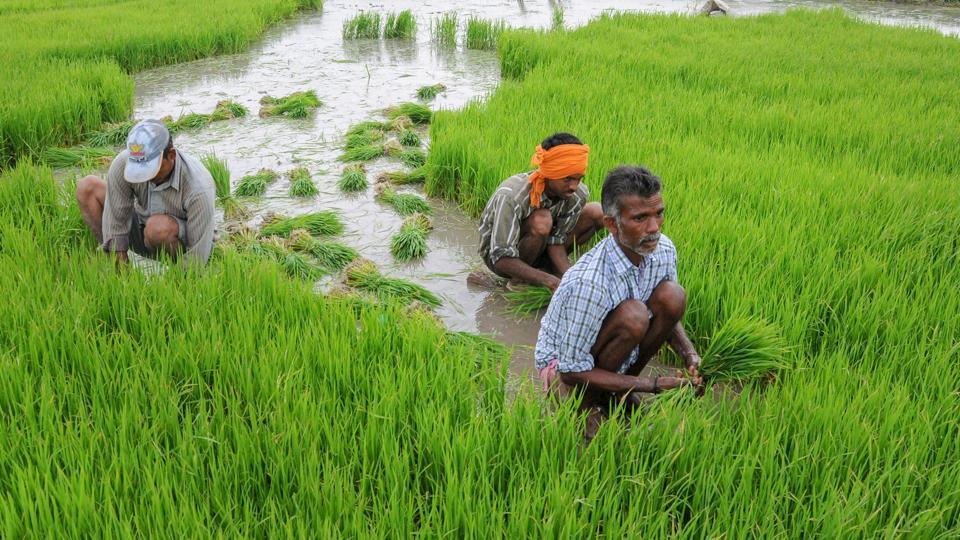
Technically, even economic recovery is faltering, if you see the signs

The recent estimates of Gross Domestic Product (GDP) have confirmed that India is now well and truly in a recession.
But the spin managers of the Narendra Modi government, who initially tried to pass this off as a “technical” recession (pray, what would that be?), are now clutching at the green shoots of positive news from the otherwise grim statistics to claim that the Indian economy has emerged out of the ICU and has moved into the general ward.
However, the reality behind the statistics conveys the impression that a sustainable recovery is far from certain.
There are three pieces of data that have been latched on to by the hopeful spinners. The first was that although overall Gross Value Added (GVA) in the overall economy had declined by 7% in the second quarter (ending September), GVA in manufacturing had actually registered a marginal increase of 0.6%. Incidentally, GVA in manufacturing had declined by a whopping 39.3% in the first quarter of the current year.
The second “positive” indicator spotted by the spin masters was the fact that agricultural GVA (actually, agriculture, forestry and fishing) increased by 3.4%, which was actually only marginally lower in the same quarter of the previous year.
The other green shoot spotted in the grim picture was from the utilities sector (electricity, gas and water supplies), which was the only other sector, barring manufacturing and agriculture, to register positive growth — 4% — during the second quarter.
Interestingly, industry chieftains and their spokespersons and the government mandarins found themselves on the same page in conveying this hopeful narrative.
The puzzle in manufacturing’s recovery
But each of these is likely to prove a difficult story to sell in the days ahead. First, manufacturing. A striking feature of the latest release from the National Statistical Organisation is that there is a divergence between the negative tidings conveyed by the Index of Industrial Production (IIP), which conveys volumetric performance of industry, and the GVA emanating from manufacturing, as conveyed by the recent estimates.
In fact, the IIP in every one of the six months of the current year has shown negative performance. Several media commentators have expressed “puzzlement” at this divergence. In reality, this should not be as puzzling as has been made out to be.
Also read: Recessionary trends emerge as WPI inflation up for first time since March
As the term GVA implies, it subsumes within it the element of prices, and therefore, of profits made by companies. Several developments during the second quarter and since then indicate that companies, especially large and medium sized companies, have managed to register smart increases in profits, despite the pandemic.
This could possibly have come from two sets of actions undertaken by companies — large scale shedding of labour force accompanied by a cut in wages that translates into lower costs, and an ability to charge higher prices for their products.
Indeed, the increased profitability of companies has been sued as justification by market pundits for the runaway surge in company stock prices in the share markets in recent weeks.
The ongoing wage squeeze
Both these features have been anecdotally validated in recent days. The cost reduction on the labour side is obviously a key feature of the post-pandemic Indian reality.
A recent survey by social enterprise Gram Vaani, led by New Delhi-based Aaditeshwar Seth, found a significant drop in earnings among a fairly large cross section of workers from major manufacturing hubs across India — Delhi-NCR, Haryana, Gujarat, Tiruppur (Tamil Nadu) and elsewhere.
The survey was conducted in the second half of October and covered 475 workers, using Gram Vaani’s participatory IVR (Interactive Voice Response) platform called Saajha Manch. The platform, maintained by 300 volunteers, is a unique “workers’ newspaper” that connects 5,000 workers every month.

The survey covered a fairly large sample of workers employed in the automobile, construction, and garment industries. It found that had not only had wages dropped significantly, but that the number of days of employment of these mostly casual workers had also declined even while workload had increased with expectation of more output from fewer workers.
“There is a big shift towards piece rate work, from regular salary-based employment,” Seth, who teaches at IIT-Delhi, told The Federal.
The other way in which companies can make profits — one that is easily understood by common folk — is increasing the prices of their products. Companies have managed to hike product prices citing pandemic-induced “bottlenecks” in supply-side factors. A key case has been steel prices, which have increased sharply in the second quarter.
KB Arasappa, president of the Karnataka Small Scale Industries Association, pointed out on November 26 that steel prices had increased by 35-40% in the last 3-4 months. He observed that prices of not just steel but even other basic raw materials such as zinc and aluminium, which are used in a wide range of industrial goods, have increased sharply.
“The touted recovery is in fact seriously impaired by this sudden development,” Arasappa noted.
These developments cast a shadow over the sustainability of the recovery that is claimed to be underway by the establishment narrative.
While profitability of individual companies may have improved because of the pricing power they now enjoy, from a systemic perspective, this raises hurdles for the viability of a much larger ecosystem in which industrial units, especially smaller ones, operate.
Demand collapse continues
The other side of the dark picture revealed in the statistics released by the NSO pertains to the snapshot of the different components of expenditures that conform to national GDP, which can offer some clues about how stable or viable a potential “recovery” may be.
The most striking feature of the data is that the share of the most important component of national GDP, Private Final Consumption Expenditure (PFCE), declined by more than two percentage points in the second quarter.
Also read: Economy jumps back, GDP contracts 7.5% amid early revival signs
The fact that this segment makes for a little more than half of India’s GDP makes this indeed a big deal. PFCE accounted for 54.2% of GDP in the second quarter, compared to 56.5% in the same quarter of the previous year. This conclusively reveals that the collapse in demand continues to be the main driver of the ongoing Indian recession.
The puzzle over why the Narendra Modi government has chosen to maintain India as an outlier in the comity of nations fighting the pandemic by refusing to countenance a tangible fiscal stimulus continues into the second quarter.
Government Final Consumption Expenditure (GFCE), as a proportion of GDP — which is where one would spot the effect of government spending to compensate for the collapse of private investment — was also more than two percentage points below the second quarter of last year.
Although exports and imports — the latter more than the former — accounted for higher shares of GDP in the second quarter, it remains to be seen how far this is linked to a sustained pick-up in investment and demand.
The one silver lining in this has been higher levels of fixed capital formation, which normally indicates a pick-up in investment. The level of capital formation in the second quarter was almost where it was last year, but it is important to emphasise that in the first quarter fixed capital formation had collapsed by a full 10 percentage points.
Two caveats are in order instead of rushing in to celebrate this as evidence that a recovery is underway. The first is that capital investment in projects are often lumpy. One large project that has been just completed in the last quarter can have the effect of making it appear that things are rosier than they actually are.

Moreover, it could just be that the slump in investment during the first quarter — the worst period of the pandemic-induced lockdown — has just been compensated in some measure during the second quarter, implying that the momentum may be difficult to maintain in uncertain conditions such as the present times.
The many imponderables on the road to recovery
One additional blip on the optimistic radar of the spin masters is the way monetary policy will evolve from here, especially when inflationary pressures are clearly visible.
The headline inflation rate is closing in on 7%. This has already had the effect of threatening to undermine the legitimacy of the Reserve Bank of India’s (RBI) inflation-targeting programme. In fact, the RBI already appears to have abandoned its target of keeping inflation at 4%.
In such a situation, the wave of cheap liquidity that has made it possible for India’s large corporates to access funds easily and cheaply is bound to subside sooner than later. This is bound to add to pressures, which can only have adverse consequences for economic revival, unless ameliorative measures are adopted.
The spinners first got into action by insisting that India is now only “technically” in a recession. This is just plain humbug because world over, among professional economists and institutions — who need clear definitions to work with — there is a general consensus that a recession is one in which an economy is in negative territory for two consecutive quarters (on an annualised basis).
How things appear from the bottom of the pit in which the economy is in is nothing but mere speculation. And, that is what these artful spinners have done.
The positive-story spinners have now seized the second quarter GDP estimates to predict a V-shaped recovery for the Indian economy. Clearly, there is much more evidence that is needed to prove that the Indian economy is on a recovery that is durable, sustainable and stable.


